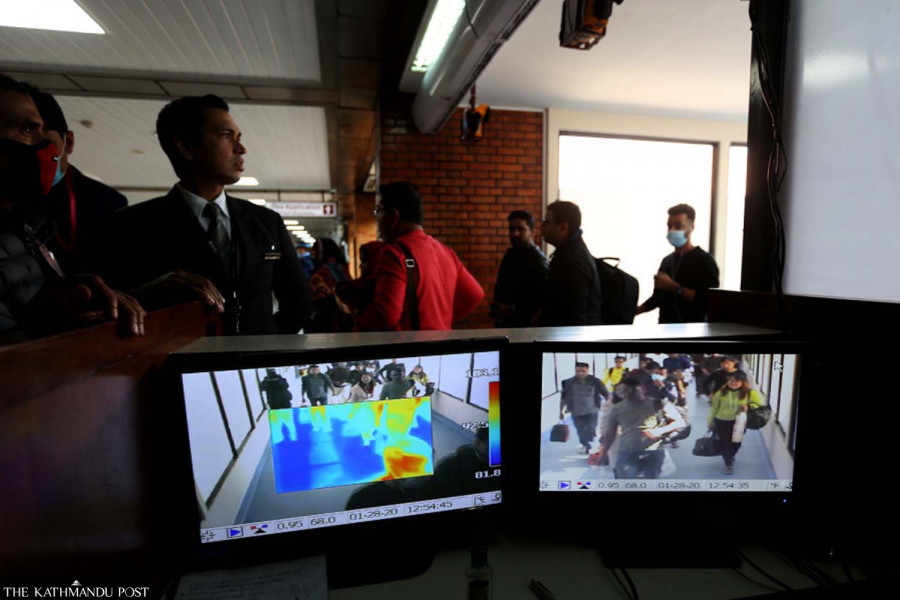Health
US health agency puts Nepal on its ‘high risk’ list
The agency suggests travellers who plan to visit Nepal must be up-to-date with Covid-19 vaccines before travelling.
Arjun Poudel
The US Centers For Disease Control and Prevention has included Nepal on its “high-risk” list for Covid-19, also called Level 3.
The decision of the US CDC comes amidst the fourth wave of the Covid pandemic, from which hundreds of people in Nepal have been getting infected every day.
Warning Level 3 or “high risk” means ‘avoid all non-essential travel to this destination [Nepal].’ The designation applies to places that have had more than 100 cases per 100,000 residents in the past 28 days.
Along with Nepal, the Centre has also included the Philippines and Russia in Level 3.
“Warning Level 3 means CDC perceives Nepal as a high-risk country for travellers in light of the Covid-19 pandemic,” said Dr Rajiv Shrestha, an infectious disease expert at Dhulikhel Hospital. “The designation could have an adverse impact on Nepal’s tourism in the coming days.”
Level 3 designation by the Centre also means that travellers who plan to visit these countries must be up-to-date with Covid-19 vaccines before travelling. If not fully vaccinated, avoid travel to the said destinations, the Centre says.
The Centre suggests those with a weakened immune system or those likely to get very sick from the Covid-19 infection must talk to medical professionals before travelling to these “high risk” destinations even if one is vaccinated.
China has closed the main border crossings—Tatopani and Rasuwagadhi—since Sunday citing a spike in Covid cases in Nepal.
Tatopani and Rasuwagadhi are the two main ports for importing goods from China to Nepal.
Experts in Nepal said that as no measures have been taken to prevent the spread of infection by authorities concerned, the ongoing spike in Covid cases could continue until September, affecting Nepal’s high season for tourism.
Tourism season in Nepal starts in September.
“The daily increase in coronavirus cases could continue till September,” said Shrestha. “But the infection will not peak at once like in the third wave since most of the population is protected by vaccines.”
The Ministry of Health and Population has estimated that the fourth wave of the pandemic will reach its peak by August end. The Ministry has also expected a rise in hospitalisation and new death in the coming days, officials at the ministry had told the Post.
“It’s difficult to say exactly when the fourth wave will peak,” said Dr Bikesh Tamrakar, an infectious disease expert. “We could make an estimation of the infection rate if tests were carried out in sufficient numbers. Currently, neither are tests being carried out in sufficient numbers nor are there any preventive measures taken to slow down the spread of infections.”
Tamrakar too agreed that Nepal’s tourism business could be affected by the Level 3 designation by the CDC.
The Covid-19 Crisis Management Coordination Centre (CCMCC) said that the agency is still in a ‘wait and watch’ mode before taking measures to contain the spread of infection.
“We are not in a position to enforce safety measures strictly, as its psychological impacts could be higher than benefits,” said Shankar Nepal, joint secretary at the Office of the Prime Minister and Council of Ministers, who is also a member of the CCMCC. “We hope that people are aware of the risks and wise enough to follow health safety measures to prevent the spread of the virus.”
Officials at the Centre said that they have not discussed the impacts of the CDC’s decision to include Nepal in the ‘high risk’ list or Level 3.
Of late, the BA.5 subvariant of Omicron has been found mostly responsible for the spread of infections in the ongoing fourth wave of the coronavirus pandemic.
Doctors say the spread of BA.5 subvariant is concerning as its mutations evade the immune system even in fully vaccinated or previously infected people.
On Wednesday, 852 people tested positive for Covid—531 in 3,876 polymerase chain reaction tests and 321 in 2,507 antigen tests. The Health Ministry said that 59 infected people, whose health conditions are serious, have been admitted to the intensive care unit and seven others in critical conditions have been placed on ventilators.
Active cases stand at 5,462 throughout the country.




 13.12°C Kathmandu
13.12°C Kathmandu














